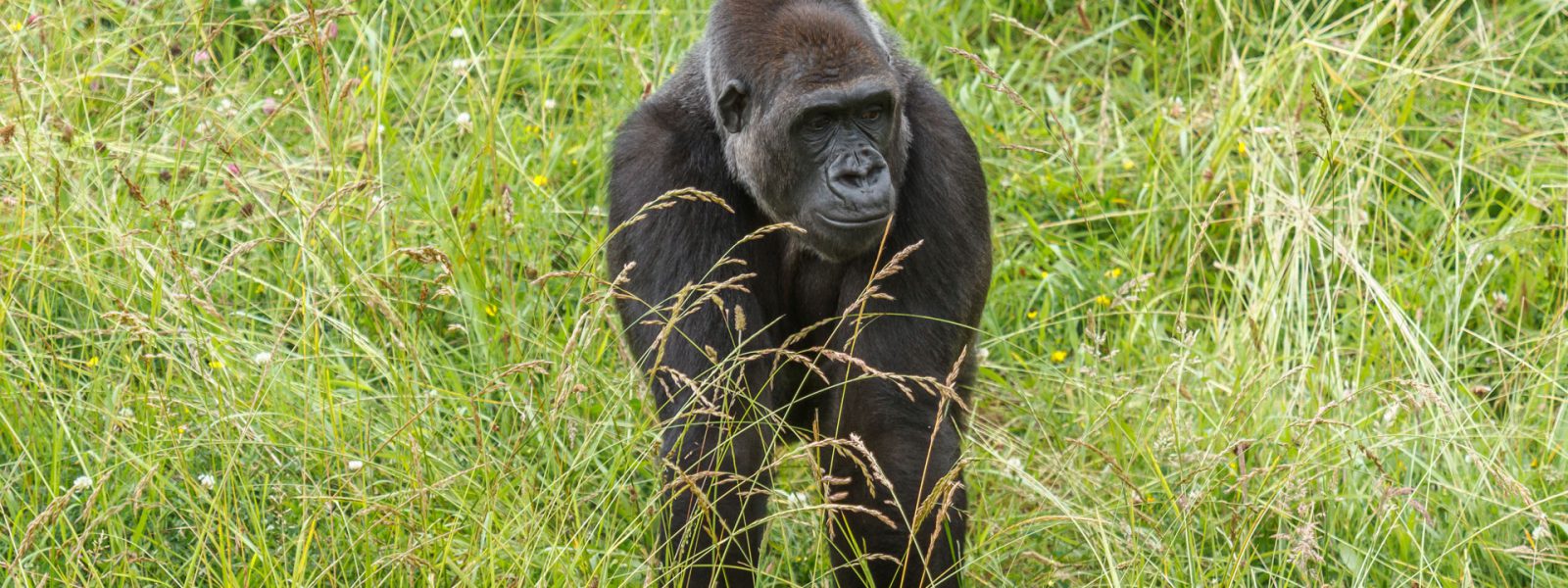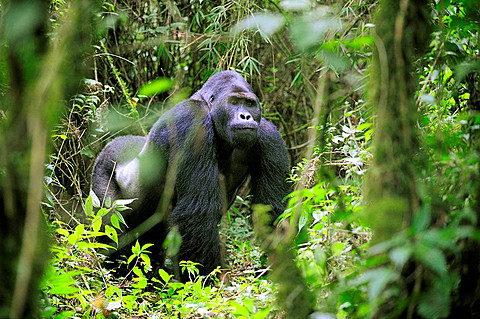
Eastern Low Land Gorillas
Eastern Low Land Gorillas
Eastern lowland gorillas are a subspecies if the Eastern gorilla species along with the mountain gorilla. The Eastern gorilla species is under the main gorilla species which is also divided into two and these are the eastern gorillas and the western gorillas. Just like the Eastern gorillas, the western gorillas are also sub divided into two that is the western lowland gorillas and the Cross river gorillas.
The Eastern lowland gorillas are only living and can be visited in the eastern part of the Democratic republic of Congo with the biggest percentage of the population living in the Kahuzi Biega national park. The Maiko national park of the democratic republic of Congo is also a home to a big number of the eastern lowland gorillas. The eastern lowland gorillas tend to stay in the lowland areas and in the tropical rain forests of the DR Congo.
A few of these eastern lowland gorillas maybe found in the forests and the reserves adjacent to these national parks for example in the Itombwe massig, the Usala forest and the Tayna gorilla reserve. The Eastern lowland gorillas differ from the mountain gorillas and the DR Congo is the only country where you can visit both the gorilla species.
The eastern lowland gorillas are bigger in size as compared to the other gorilla species and an average adult eastern lowland gorilla is considered to be the biggest of them all. An adult male eastern lowland gorilla can weigh up to 210 kilograms while the female can weigh about 100 kilograms. These are very sociable creatures and spend most of their day feeding and relating with each other in their family setting.
The eastern lowland gorillas are strictly omnivores and this means they only feed on the stems, fruits, barks, leaves and sometimes the small insects like the termites and ants. The lowland eastern gorillas live in a family/ group setting of up to 30 individuals. Each of these gorilla families is led by a dominant male silverback gorilla with a number of females and their young ones.
A female mountain gorilla will give birth to one gorilla at a time and on rare occasions will birth twin gorillas and the gestation period is the same as in humans which is 9 months and they will breastfeed for about 3 years until they can start to eat other foods. The gorilla species in general shares 99% of the human DNA and this is much evident on your visit to the Kahuzi Biega national park for a lowland gorilla trekking experience.

The male silverback will be the head of the family and will protect all the other family members and also teach the younger male gorillas basic survival skills as the females will only take care of the younger members of the group. At a certain age, the females birthed in a gorilla family will leave to join another family and start a new life with a new partner.
The eastern lowland gorillas are considered of age at about 8 years for the females and at 12 years for the male gorillas and this is when they can part ways with their birth group to another one.
The Eastern lowland gorillas also known as the Grauer’s gorilla are also listed on the International Union for conservation of Nature on the critically endangered with about 3,500 individuals left in the world. The Eastern lowland gorillas were more in the early 90 with an estimated population of about 17,000 individuals but given a few factors, the numbers have critically dropped.
A few of the reasons as to why the numbers of these eastern lowland gorillas have been dropping in numbers is the human effect on their habitats. Humans have encroached on the land in the forests that double as their homes and this has forced them out without protection. The lowland gorillas are also poached for bush meat as others are sold as pets to the elite.
The lowland gorillas of the DR Congo are also faced with unrest in the region and some are killed in the wars while some people who are hiding in the forests kill them for food to survive. Some of the lowland gorillas are caught by the traps set for the smaller game and if they are not helped early enough, they may bleed to death.
The Dian Fossey Fund that has been supporting the conservation of mountain gorillas has recently come to focus on the lowland gorillas as well in 2001 and they started with maintaining the Nkuba Conservation area that is a home to about 200 gorillas. The communities have been sensitized on the importance of conserving the lowland gorillas. The African Great Apes programme has also put effort in the conservation of these gorillas.
A lowland gorilla trekking permit in the Kahuzi Biega national park can be purchased at 400 USD per permit per person. Get in touch with us and let us plan for you a Congo safari from Kigali or Goma to the Kahuzi Biega national park.
The eastern lowland gorilla—also known as Grauer’s gorilla—is the largest of the four gorilla subspecies. It is distinguished from other gorillas by its stocky body, large hands and short muzzle. Despite its size, eastern lowland gorillas subsist mainly on fruit and other herbaceous materials, just like other gorilla subspecies
They are one of African most love primates depicted in the number that visit this park every now and then.
Years of civil unrest in the Democratic Republic of Congo (DRC) have taken their toll on both the eastern lowland gorilla and the mountain gorilla. The eastern lowland gorilla makes its home in lowland tropical rainforests in the eastern DRC. In the last 50 years, its range has decreased from 8,100 square miles—about the size of the state of Massachusetts— to about 4,600 square miles today.

The Lowland gorillas can only bee seen in Kahuzi Biega National Park in the Democratic Republic Of Congo. It can take you a minimum of 3 days to track these gorillas.
What you need to know about the Lowland Gorillas:
1) They are herbivores and eat a lot of plants seeds, leaves and tree barks. they also eat ants and other insects.
2) They are the largest of all the gorillas species.
3) A mature male weighs about 250 Kgs and can be up to 2 meters tall.
4) Just like any other primates you are only allowed to spend one hour with these gorillas. you have the chance to feed them during that hour.
5) The major threats to these gorillas in habitat loss due to Agriculture and illegal settlement. Poaching is also key.
6)Just like the mountain gorillas, the lowland gorilla also make a new nest every single day. The young gorillas share a nest with their mother until the age of three.

